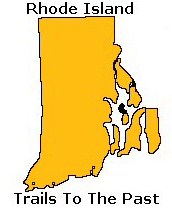|
The area that is now Providence was first settled in June 1636 by Roger Williams, and was one of the original Thirteen Colonies of the United States. Although the west bank of the Providence River was later claimed by both the English and the Dutch, the actual inhabitants and true masters of the region were the Pokanoket Tribe of the Wampanoag Nation led by Massasoit Ousamequin. Williams secured permission to settle from the Pokanoket and gave the city its present name. Williams' Providence soon became a refuge for persecuted religious dissenters, as he himself had been exiled from Massachusetts. Providence's growth would be slow during the next quarter-century-the subsuming of its territory into surrounding towns, difficulty of farming the land, and differing of local traditions and land conflicts all slowed development.
In the mid-1770s, the British government levied taxes that impeded Providence's maritime, fishing and agricultural industries, the mainstay of the city's economy. One example was the Sugar Act, which was a tax levied against Providence's distilleries that adversely affected its trade in rum and slaves. These taxes caused Providence to join the other colonies in renouncing allegiance to the British Crown. In response to enforcement of unpopular trade laws, Providence residents spilled blood in the leadup to the American Revolution in the notorious Gaspée Affair of 1772.
Though during the American Revolutionary War the city escaped British occupation, the capture of nearby Newport disrupted industry and kept the population on alert. Troops were quartered for various campaigns and Brown University's University Hall was used as a barracks and military hospital.
After departing from Newport, French troops sent by King Louis XVI and commanded by the Comte de Rochambeau passed through Providence on their way to join the attack against British forces. The march from Newport to Providence was the beginning of a campaign led jointly by Rochambeau and General George Washington in a decisive march that ended with the defeat of General Cornwallis in the Siege of Yorktown at Yorktown, Virginia and the Battle of the Chesapeake.
Following the war, Providence was the country's ninth-largest city with 7,614 people. The economy shifted from maritime endeavors to manufacturing, particularly machinery, tools, silverware, jewelry and textiles. By the turn of the twentieth century, Providence boasted some of the largest manufacturing plants in the country, including Brown & Sharpe, Nicholson File, and Gorham Silverware. The city's industries attracted many immigrants from Ireland, Germany, Sweden, England, Italy, Portugal, Cape Verde, and French Canada. Economic and demographic shifts caused social strife, notably with a series of race riots between whites and blacks during the 1820s. In response to these troubles and the economic growth, Providence residents ratified a city charter in 1831 as the population passed 17,000.
During the Civil War, local politics split over slavery as many had ties to Southern cotton. Despite ambivalence concerning the war, the number of military volunteers routinely exceeded quota, and the city's manufacturing proved invaluable to the Union. Postwar, horsecar lines covering the city enabled its growth and Providence thrived with waves of immigrants and land annexations bringing the population from 54,595 in 1865 to 175,597 by 1900.
The city's boom began to wane in the mid-1920s as industries, notably textiles, shut down. Jewelry manufacturing continued to grow, taking up the slack and employing many of the city's new immigrants, coming from Portuguese, Italian, Polish, Lithuanian and Jewish backgrounds. A number of hospitals also opened. The Great Depression hit the city hard, and Providence's downtown was subsequently flooded by the New England Hurricane of 1938. Though the city received a boost from World War II, this ended with the war.
The information on Trails to
the Past © Copyright may be used in personal family history research, with source citation. The pages in entirety may not be duplicated for publication in any fashion without the permission of the owner. Commercial use of any material on this site is not permitted. Please respect the wishes of those who have contributed their time and efforts to make this free site possible.~Thank you!
|



